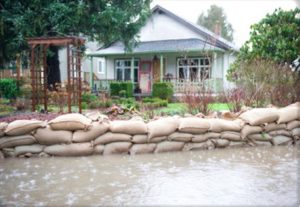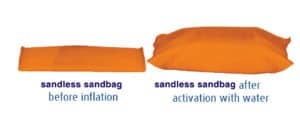Replace Sand with Sodium Polyacrylate for Better Flood Control
Iconic images of brave citizens filling sandbags and passing them down the line to build a quick, temporary dam span centuries. Floods can happen suddenly and leave behind great destruction, particularly in low-lying areas or around lakes, rivers, and streams.

Sandbags are difficult to use effectively in an emergency because often there aren’t any readily available. Advances in Sodium Polyacrylate Super Absorbent Polymers allows for better water-absorbing flood bag technology, making sandless sandbags the choice for rescue organizations and flood-prone communities around the world.
What is a sandless sandbag?
Rapid response “sandless” sandbags are filled with sodium polyacrylate and (often) a small amount of gravel or sand to act as a ballast, instead of sand. When dry, they are very lightweight and small, making storage simple. And during a flood, they can easily be transported where needed. Once exposed to water, they rapidly swell and form a barrier to rising flood waters.
The bags can be filled with M2 Polymer’s WASTE LOCK® Cross Linked Sodium Polyacrylate SAP. When this polymer material is combined with water, it draws water molecules into the matrix of polymer chains through a diffusion gradient. It absorbs and retains the water due to strong hydrogen bonding with water molecules. Once absorbed, Sodium Polyacrylate SAP will not release water like conventional adsorbents. The water is truly retained in the particles at a molecular level, which is why it is an excellent option for flood prevention.
Sandless sandbags absorb, contain & divert problem flood water. In simple terms, these sandbags are made to absorb water causing the bag to swell. Once the material absorbs enough water, a durable barrier is formed to prevent flooding.

How do I make these?
To produce rapid-response, sandless sandbags, one typically sews two sheets of water-permeable fabric together with granules of WASTE LOCK® SAP in the center. Sometimes channels or pockets are also sewn into the bag to direct the polymer to specific areas. Once placed in water, these lightweight bags rapidly absorb and become large and heavy thereby blocking rising flood waters.
M2 Polymer Technologies can advise you on any flood mitigation efforts. If you reach out with your specific needs, our experts can offer instructions to make your own flood bags using our products. Contact us today